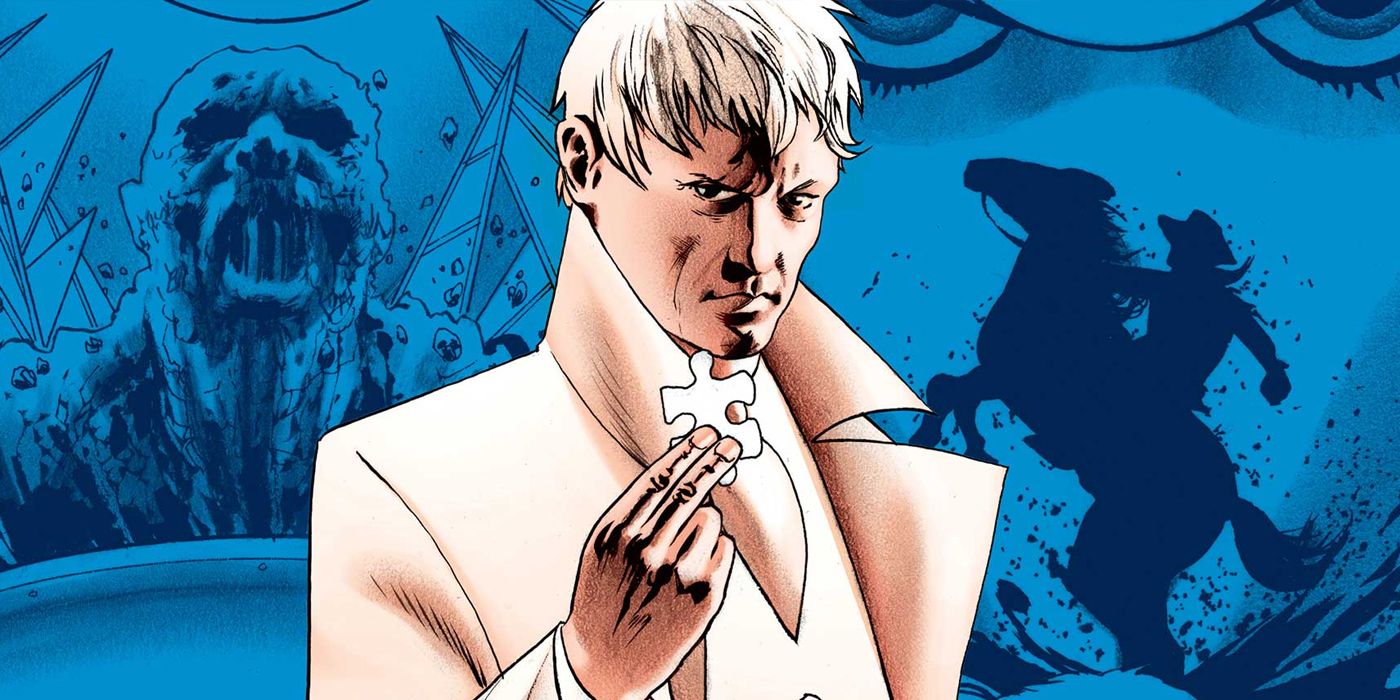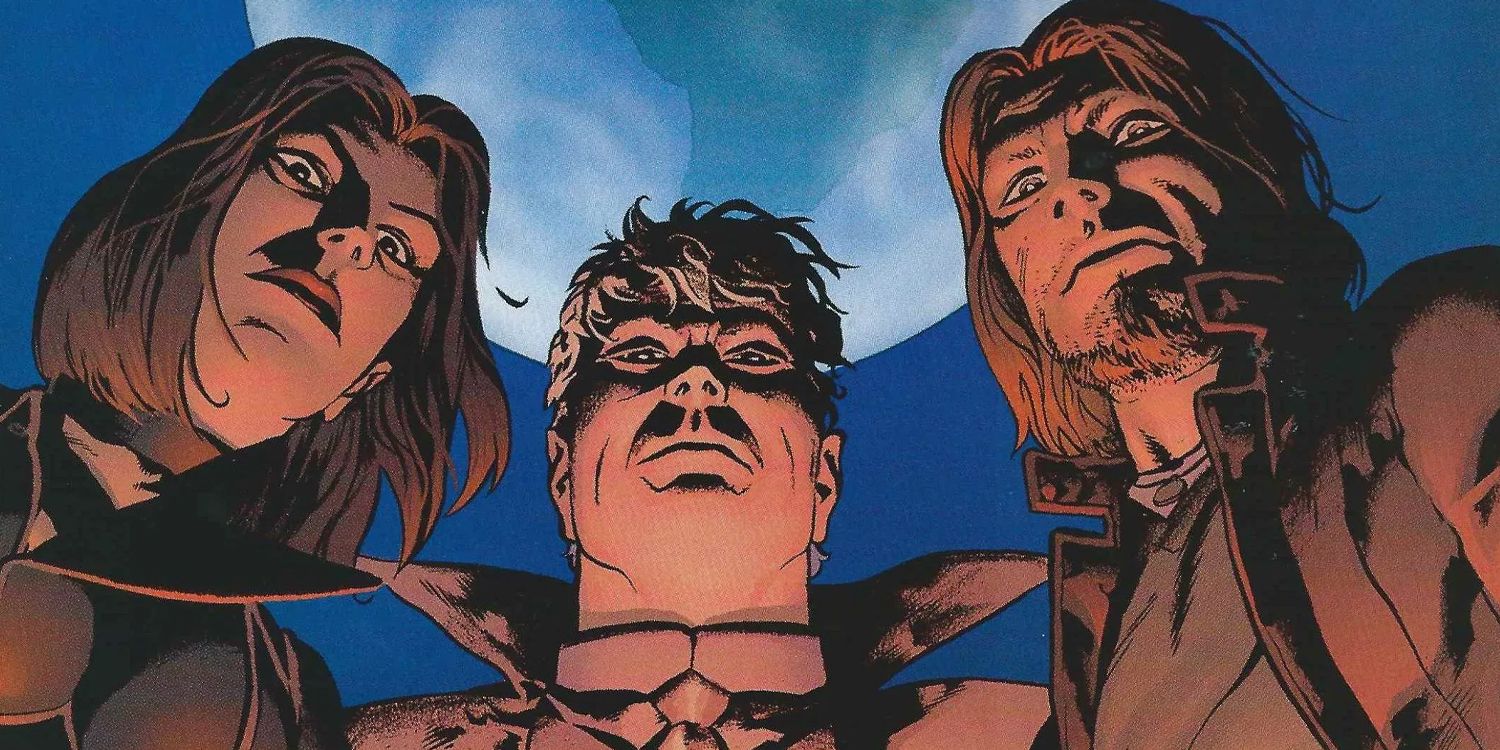Thanks to Netflix’s Castlevania, comics writer Warren Ellis has been introduced to a whole new wide audience. While his unmatched body of work has made him a legend to comics fans for decades, one of his most prominent works, Planetary, has become something of a hidden gem in the years following its initial publication.
With art from John Cassaday, Laura Martin, Planetary was an ongoing series for DC’s now-defunct Wildstorm imprint. After a preview initially appeared in Gen13 in 1998, the series premiered months later in April 1999. Over the next decade, it ran for a total of 27 issues, along with three crossover specials. While the series has always been a critical darling, Planetary has flown under the radar of many comic fans while maintaining a passionate cult following.
It’s ironically fitting that Planetary has become something of a lost treasure because that’s what the series is all about -- recovering and reclaiming that which was lost. Unlike most other superhero comics, the Planetary Organization is not out fighting crime or saving the universe. Instead, they’re super-powered archaeologists, seeking to uncover and chart the secret history of the 20th century. Planetary searches for the fantastic and strange to ensure that they do not pass from this world unremembered.
The series follows Planetary’s field team, three superhumans backed by a world-spanning information network and nearly unlimited resources, all at the behest of their mysterious employer, the Fourth Man. In the first issue of the series, the irascible Elijah Snow is recruited to be the new third member of the field team. His predecessor’s disappearance serves as another mystery behind the Planetary Organization. Elijah is a special type of superhuman, one of WildStorm's “Century Babies.” These unique individuals were all born on January 1, 1900 and are effectively immortal. All of them also possess some kind of superpower and wear white for a reason that is never truly explained.
The most famous Century Baby in comics is another invention of Ellis, Jenny Sparks from The Authority. It’s believed that each Century Baby is spawned by the multiverse to serve a special purpose for that century. Jenny Sparks was often called “The Spirit of the 20th Century” and Elijah Snow is referred to as “The Ghost of the 20th Century.”
Elijah has cold manipulation abilities and superhuman intelligence. He can’t hurl snowballs like Killer Frost or the X-Men's Iceman, but he can turn clouds of nerve gas into ice and take out enemies by freezing the water in their brains. The irrepressibly grumpy Elijah is joined by Jakita Wagner, a nigh-indestructible, easily bored adrenaline junkie and the Drummer, a technopath and walking anti-surveillance field who likes to fiddle with drumsticks and say weird things.
Planetary’s exploits serve as an excuse for Ellis and Cassaday to delve into whatever corner of superhero and pulp history they desire, re-contextualizing them into something new and fantastic. Ellis’ writing is only elevated to something more profound by the incredible artwork from Cassaday and Martin's colors. Together, they found a way to filter almost a hundred years of pop culture into its purest form.
There's a metacontextual aspect to Planetary as well. The series started it's run as the 20th century was ending, as the world and the comic industry were on the cusp of impending change. With Planetary, Ellis and crew sought to record all that came before which they cherished. As Alan Moore said in his intro to the first trade paperback, “It is at once concerned with everything that comics were and everything that comics could be.”
In Planetary’s first six issues alone, the comic covers pulp heroes of the '30s, giant monster movies, '90s Hong Kong action films, crazy reinterpretations of Golden Age superheroes and the most evil take on the Fantastic Four in comics. The comic is designed to feel episodic at first, but those loose threads quickly come together as the comic progresses to form a structure as intricate as a snowflake. With a few revelations that still come across as startling today, the series pivots into a more serialized direction as Planetary suddenly finds themselves with an enemy and a purpose beyond archeology. Despite this, the story never stops jumping genres and the series never stays put.
Since WildStorm was a subsidiary of DC, it afforded Ellis and Cassaday an opportunity to interact with the heroes of that world. Of the three crossover specials released, two can be considered canon, while the other is most definitely an alternate reality tale. That one, Ellis and Jerry Ordway's Justice League/Planetary special presented a world where Planetary was a sinister, world controlling organization. A resistance movement comprised of Bruce Wayne, Clark Kent and Diana Prince launch a daring mission to topple Planetary and kill a villainous version of Elijah Snow.
However, Ellis and Phil Jiminez's Authority/Planetary crossover is canon because both are set in the same world. It afforded readers the long-anticipated opportunity to see Elijah Snow and Jenny Sparks meet.
However, the most interesting of the crossovers is Ellis and Cassaday's Batman/Planetary, which paid homage to the many different versions of the Dark Knight. In it, Planetary travels to their Gotham City where they track down a sick man who is uncontrollably jumping through the multiverse.
In their attempts to subdue him, the field team winds up transported to the proper DC Universe and are confronted by a Batman who is continuously changed by the shifting realities around him. From Adam West’s campy rendition to Frank Miller’s hardened Dark Knight Returns and more. Cassaday’s art shines as he masterfully changes styles from world to world.
Planetary may not be at the top of many comic readers' minds today, but it should be. It’s a piece of history, both for the legacy it was trying to preserve and the way it captured the zeitgeist of the world as it transitioned to the 21st century.




